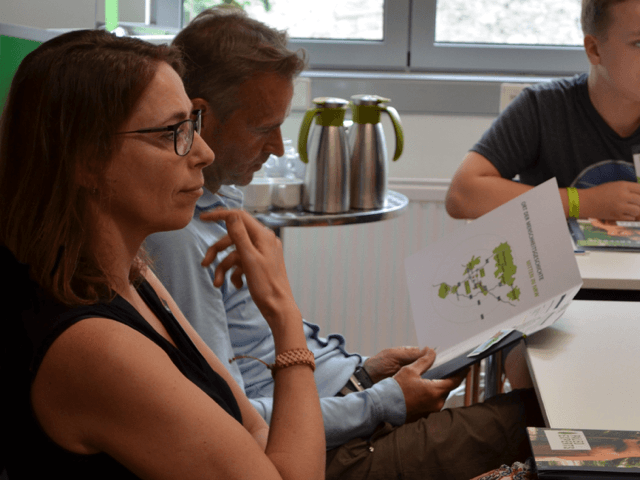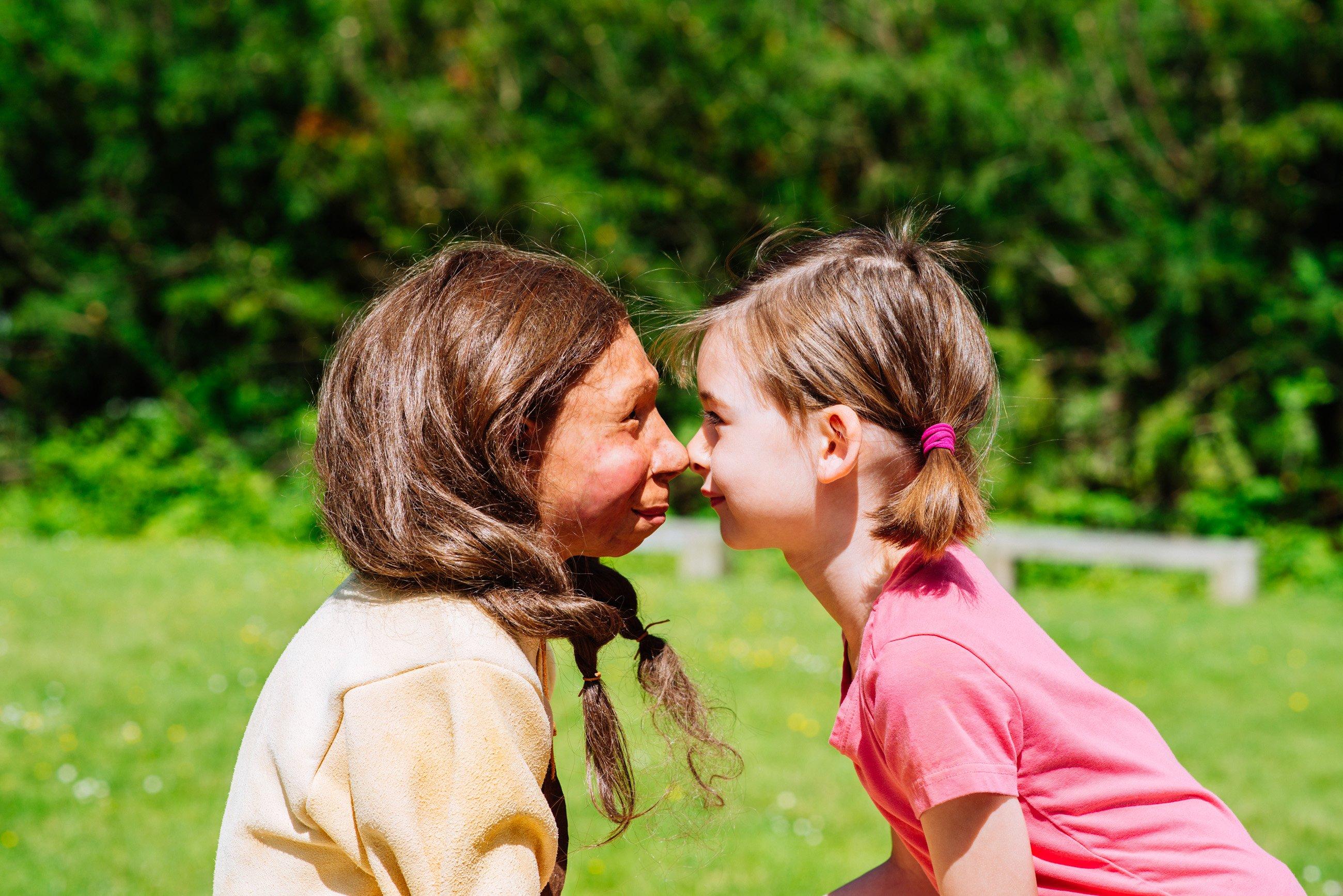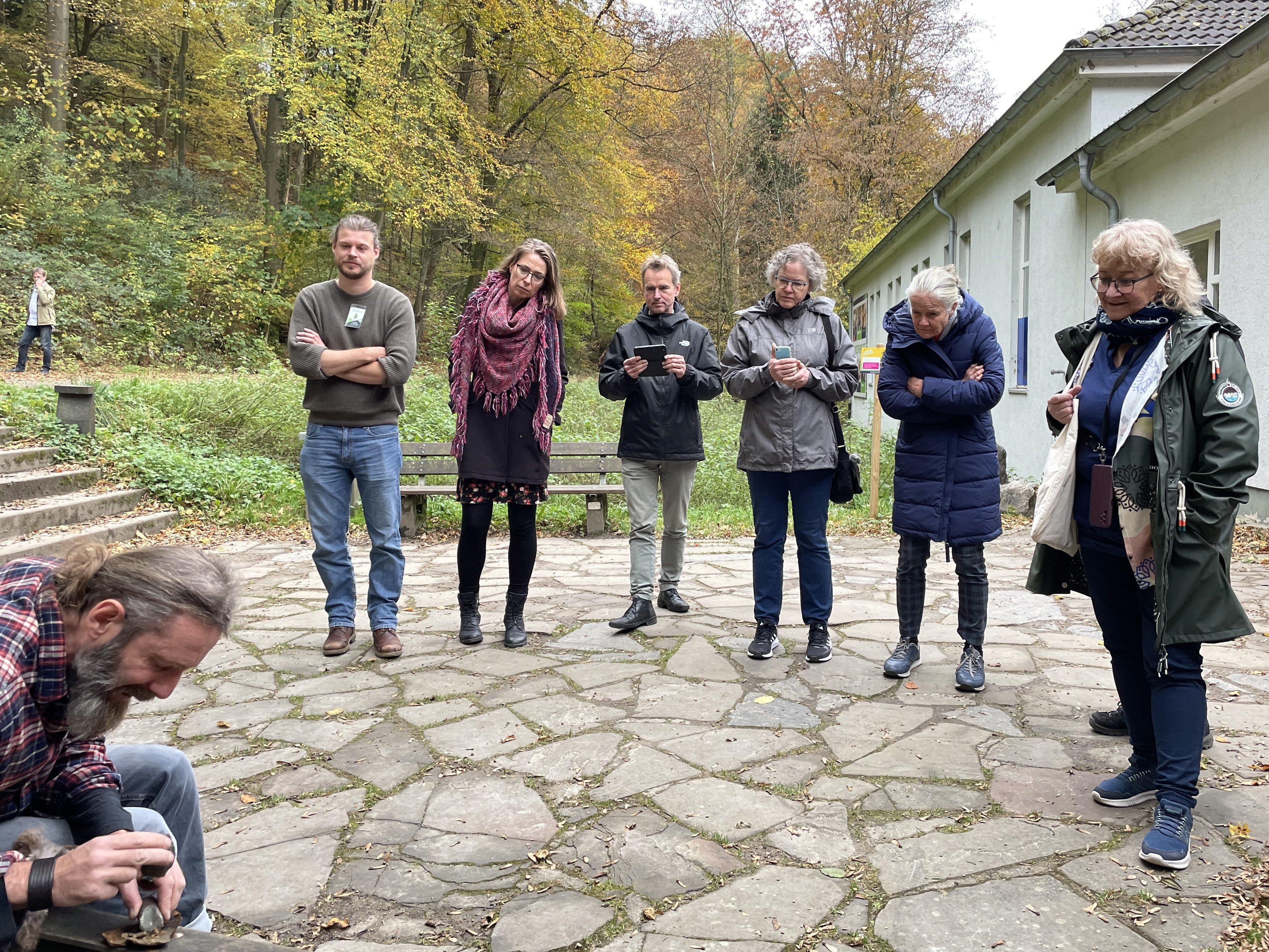Neanderthals as familiar strangers

With a background in psychology and biology, I’m interested in how we define ourselves, as a person and as a species. This led me to palaeoanthropology, a discipline that is not only about ancestors from a distant past, but is also concerned with the identity of our own species, defining and redefining what it means to be human. Palaeoanthropology has been driven by the question when and why did we break away from the rest of the animal world, looking for a human mark or spark that separates us.
Right from their discovery in 1856, Neanderthals have been the subject of intense debates. Are they human, or some failed attempt, a crude prototype of our own species? I’m interested in Neanderthals as familiar strangers, in between the ‘clearly us’ on the one side and the ‘definitely not us’ on the other side, as the criteria dividing these two are always changing. Both same and different, close to us yet distant. Although now they are generally considered to be ‘people like us’, there still seems to be the need to look for the distinguishing difference, which explains why we are here and they are not.

Neanderthal research functions as a case study, as a vantage point from which we may recognize, and reconsider, the logic of Us versus Other at work when it comes to understanding ourselves as human. I want to illuminate implicit assumptions underlying our idea and ideal of humanness, that form the basis of our understanding of the human past. Not focussing on WHERE to draw the line (the question whether Neanderthals are ‘really’ human) but WHY this quest for a signifying difference, the desire to distinguish ourselves.
While one of the big methodological challenges of Neanderthal research is how to prevent genetic contamination of Neanderthal remains with modern DNA, I am focussing on epistemic contamination, the extent to which our vision of Neanderthals is contaminated by our modern preconceptions and desires. Therefore, I study contemporary Neanderthal discourse from an ‘oblique perspective’, zooming in on that tends to be unsaid or unquestioned in the academic discourse. When reading both scientific as literary documents, the focus of attention shifts from the objects (the bones, stones or genes) to the ways in which the findings are presented. On the terminology that is used, the images that are projected, and the binary logic of, among others, human versus nature, science versus fiction, masculinity versus femininity. This process of rethinking our self-image, our origin stories, and our place in nature, is urgent against the backdrop of the global environmental crisis.

Via workshops with the Paleo experts we can exchange opinions, ideas and diverse perspectives about what it means to be human, and gather information on how changing perspectives on human evolution are taken up by citizens. I’m for example interested to know how they would imagine an encounter with a Neanderthal, or what catches their attention when watching a movie. This interaction helps us to think of different questions and issues and connects our research to a wider public.
Peeters, S., Zwart, H. Neanderthals as familiar strangers and the human spark: How the ‘golden years’ of Neanderthal research reopen the question of human uniqueness. HPLS 42, 33 (2020). https://doi-org.eur.idm.oclc.org/10.1007/s40656-020-00327-w